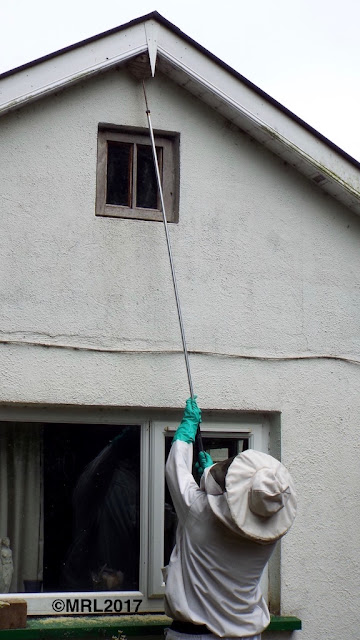We took a train to Killarney a few days ago. It was a most enjoyable journey that passed through delightful scenery, lush green fields, distant mountains and of course the Paps of Anu which always catch our attention.
The Paps held a significance.
Part of the reason for our journey was to visit an historian who has kept these mountains in his focus and in the public eye for over seventy years. Being an author of dozens of articles that have been read in almost every Irish publication, he is a well known figure in Kerry.
Today Dan Cronin, a native of Rathmore, near Killarney, who, at the age of ninety-seven has not yet retired his pen, told us that there are still a couple more articles that he intends to write.
Do you know this elegant person ?
KILLARNEY RAIL STATION
Two Stags Rutting
This particular pair have a stainless steel skeleton
with bronze sheathing and cost €70,000.
The Gaelic Muse
New use for a phone box stood next
too a representation of a White Tailed Eagle
The Eagle who resides in Killarney Town Centre was commissioned by a sub group of Killarney Town Council, the Killarney Arts Committee, in 2008/2009. The sculpture, a local artist Joe Neeson, initiated the concept from design to creation which represents the Killarney connection with the White Tailed Eagle. During that time the White Tailed Eagle project was well underway which saw the Eagle reintroduced to Killarney National Park.
Murphy's Ice Cream Parlour http://murphysicecream.ie/about-us.html
The second reason for the visit was to ramble around the town with our cameras and to enjoy ourselves by window shopping. That was the plan until we saw that there was a large branch of TK MAXX in the High Street and our resolve not to shop crumbled in milli-seconds !
We finally treated ourselves to one garment each and departed with a spring in our step to a small cafe for lunch.
This was followed by a delicious ice-cream from Murphy’s of Dingle whose slogan is “ice cream that know’s where it’s coming from”
A lovely mural in one of the dining rooms of a unknown café where we had a wonderful lunch of a large toasted flatbread with a Cheese, Tuna and Sweetcornfilling and because of our hunger we failed to note the name of the café!
The Paps of Anu
There was a lot more to see and explore in Killarney whose name translates as Cill Áirne, meaning Church of the Sloes.
We shall return again later in the year, when hopefully the streets will be less busy, for we country mice are not comfortable in crowds.
I am making promise to myself to treat Mrs H to a ride in one of those famous jaunting cars on our next visit and perhaps another ice-cream will be in order.
Where shall we visit next do you have any suggestions ?














































